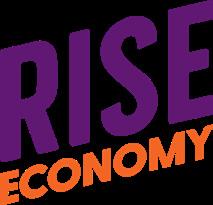BRIDGING THE DIGITAL DIVIDE


An Action Plan for Financial Institutions
Jamie Buell, Research Analyst Kevin Stein, Chief of Legal and StrategyBridging the Digital Divide: An Action Plan for Financial Institutions

Access to technology and high-speed internet is crucial for individuals to fully participate in our economy, yet significant portions of the population still lack access to digital resources, perpetuating inequality and hindering economic opportunities.
In this report, we highlight the role banks can—and should— play in promoting broadband access and adoption. We provide context and delve into the initiatives, strategies and successes that help bridge the digital divide. Banks, as key community anchor institutions, have a unique opportunity and responsibility to help promote digital equity. Leveraging their resources, expertise and infrastructure, banks can promote financial inclusion, invest in broadband projects, and partner with nonprofits, public agencies and community members to foster digital equity.
An Imperative Opportunity for Banks
With support from the California Emerging Technology Fund (CETF), Rise Economy, formerly the California Reinvestment Coalition, has increasingly worked and advocated for equitable broadband access for low-to-moderate income (LMI), rural and Black, Indigenous and People of Color (BIPOC) communities. In the past year, we have collaborated with the Federal Reserve Bank of San Francisco, the Federal Deposit Insurance Corporation (FDIC), and the Office of the Comptroller of the Currency (OCC) on an interagency community development forum to discuss funding mechanisms to expand broadband services and advance digital equity in rural California. We have also published a fact sheet summarizing findings from multiple surveys of national and community banks, local Rise Economy member organizations and participants of Rise Economy’s Economic Equity Promotoras program.
Our surveys found that 13 of the state’s largest banks are currently supporting, and are interested in further supporting, broadband and digital equity initiatives. Many banks expressed a need for more information about the digital equity ecosystem, and how they can play a supporting role in relation to other entities (government, private and nonprofit). Many were also interested in how such investments can count for credit under the Community Reinvestment Act (CRA). To answer some of these questions, we conducted additional surveys and held one-on-one conversations with industry experts, practitioners and advocates to further identify specific recommendations for how banks can assist in bridging the digital divide.
The Digital Divide Widens the Racial Wealth Gap
Access to affordable and convenient financial services is crucial for socio-economic development. Banks can be a driving force for socio-economic development by promoting financial inclusion, which reduces poverty, narrows social inequalities and fosters economic growth. However, the digital divide exacerbates financial exclusion, as individuals without internet access or who lack digital literacy face significant barriers to utilizing banking services. These individuals often rely on traditional brickand-mortar banks, which may be inaccessible due to distance, limited operating hours, documentation requirements, or the growing trend of bank branch closures. Consequently, they are excluded from the benefits of a wide array of financial services, including savings, loans and secure transactions.
The importance of broadband access cannot be overstated, though research has shown that access is not always equitable nor readily available to those who need it most.
CETF conducts an annual survey on internet adoption and the digital divide in California. According to their 2021 survey, broadband adoption across the state reached 91%, with the exception of the Central Valley, which had an adoption rate of 86%, five percentage points lower than the state average.
Furthermore, low-income households and Hispanic households had some of the lowest rates of broadband adoption – 82% and 84%, respectively. Among unconnected and/ or under-connected survey respondents, 68% report that internet connectivity is too expensive. Sixty-two percent of unconnected and/or under- connected respondents reported being unaware of any discounted internet plans offered. Among those who were aware of existing discounts, only 24% — or about 1 in 4 — actually applied to these programs.
However, more than 3.7 million California households are eligible for free or lowercost Wi-Fi and may not even know it, according to data published in April 2023 by EducationSuperHighway, a national nonprofit that partnered with the City of San Francisco to get more people online through the Affordable Connectivity Program. Just 36% of eligible California households are enrolled in ACP
Post-COVID: Race, Income and the State of the Digital Divide
The COVID-19 pandemic exposed the startling realities of the lack of internet access in low-income, BIPOC communities and households. Prior to the pandemic, the push toward online banking was on the rise, partially accelerated by bank branch closures which disproportionately impacts rural areas, typically regions which have the lowest broadband adoption rates and the least number of Internet Service Providers (ISP).
Bank branch closures are becoming more common and recent bank failures threaten to further reduce investment in communities and access to financial services. Rural community members, who more frequently visit branches in person, may be left without accessible banking services as branches disappear, and using online banking platforms may be infeasible due to inadequate broadband access.
For communities lacking access to broadband, internet access is more crucial and influential to upward mobility than ever before.
A lack of broadband access makes a job search more difficult, as job postings are largely listed online, and as building an online profile is necessary to submit job applications. Populations with lower rates of broadband adoption, therefore, are limited in their ability to enter new employment in a higher-paying industry that may have remote work options. Twenty-one percent of Californians used the internet for job searches as well as online classes or job training. Some studies have also found that broadband access is correlated with higher labor force participation rates.
For small business owners, an online business presence and digital marketing can help expand their customer base, increase profits, hire employees and build wealth. Yet, respondents to a survey from Small Business Majority reported paying for advertising was a challenge and starting an e-commerce presence presented a knowledge gap. Additionally, more BIPOC entrepreneurs reported not having an online presence versus white borrowers
On the Ground: Community-Based Organizations Live the Digital Divide Rise Economy’s members act as financial first responders, providing direct resources such as financial literacy training, small business technical assistance, legal services, and housing counseling to local communities. They’re trusted partners in their communities. As such, we conducted surveys and interviews with 16 of our member organizations who represent and serve numerous consumers and small businesses. Their and their clients’ lived experience helps identify barriers to high-speed internet access and adoption in select community groups.
1 Family Economic Security: Among 16 respondents who identified barriers to broadband access related to financial health and economic wellness, these were the top issues:
a Internet subscriptions and devices are too expensive (13 of 16 respondents identifying this as an issue).
b Online applications for subsidies (affordable connectivity program, unemployment, etc.) are unknown to the community and/or are difficult to navigate (12 of 16 respondents identifying this as an issue).
c Mobile banking is not language accessible(9 respondents out of 16 identifying this as an issue).
d Mobile banking is difficult to navigate (8 out of 16 respondents identified this as an issue).
2 Small Business Ownership: Among 15 respondents who identified barriers to broadband access related to small businesses, these were the top issues:
a Challenges paying for internet fees, software fees and online subscriptions to seller platforms or business tools.
b Lacking knowledge of online marketing tools.
c Lacking adequate digital devices or software to run their businesses.
3 Affordable Housing and Broadband Access: Among 15 respondents who identified barriers to broadband access related to affordable housing, these were the top issues:
a Paying for internet plans is too expensive for tenants.
b Internet connection is often unstable or unreliable.
c Installing fiber optic connections in affordable housing units is too costly or difficult to navigate for nonprofit developers.
d Maintenance/sustainability of broadband connection in affordable housing units is too costly for nonprofit developers.
Federal, State and Local Broadband Access and Adoption Programs

Several recent government-funded initiatives have been designed to address various aspects of broadband expansion, digital inclusion, and equitable access to technology with the objective of bridging the digital divide and ensuring all communities can participate equitably in the digital economy. In particular, substantial momentum and attention are being directed toward infrastructure buildout and digital equity, but continued investment and support will be needed to sustain this attention and ensure the implementation of funds and programs is equitable.
In our survey of banks, several indicated a desire to leverage outside dollars to make bank funds go further. There has never been a better time to do so, and the opportunities to leverage federal and state funding and nonprofit resources in California are plentiful. The following outlines several federal programs and their funding areas, to illustrate the momentum and areas that may need support in implementation.
Federal Programs
American Rescue Plan Act: The Capital Projects Fund which was a part of the American Rescue Plan Act (ARPA), amounting to $10 billion, aims to support broadband infrastructure projects and digital connectivity technology projects. At least $100 million is designated for each state, the District of Columbia and Puerto Rico, along with a portion of the remaining $4.6 billion. Territories receive $14 million each and tribal governments are allotted $100 million.
Infrastructure Investment and Jobs Act: The Infrastructure Investment and Jobs Act’s (IIJA) allocation of $65 billion distributes $42.5 billion to states, territories, the District of Columbia and Puerto Rico to begin their Broadband, Equity, Accessibility and Deployment (BEAD) grant planning program. The National Telecommunications and Information Administration recently announced state funding allocations, with California receiving upward of $1.8 billion for “deploy[ing] or upgrad[ing] broadband networks to ensure that everyone has access to reliable, affordable, high-speed Internet service.” Once deployment goals are met, any remaining funding can be used to pursue eligible access, adoption and equity-related uses.
Also within the IIJA is the Digital Equity Act, which has multiple state grant programs for advancing digital equity and inclusion activities. The State Digital Equity Planning Grant awards $60 million to states (including the District of Columbia and Puerto Rico) to develop State Digital Equity plans or similar plans. The State Digital Equity Capacity Grant program received $1.44 billion to be distributed to the states for the purpose of implementing their State Digital Equity Plans (or similar plan).
Similarly, the State Digital Equity Competitive Grant program, funded with $1.25 billion for “grant awards over 5 fiscal years for private sector, public sector, and not-for-profit entities to advance digital equity and engage in digital inclusion activities.” Additionally, the Tribal Connectivity Program receives $3 billion for broadband deployment in tribal lands, while the Middle-Mile Broadband Program receives $1 billion for the construction, improvement and acquisition of middle-mile infrastructure.
State Programs
California passed SB 156, a comprehensive bill focused on investing in broadband infrastructure to expand access throughout the state. The bill proposes a significant investment of $6 billion, aiming to improve and enhance broadband connectivity.
Out of the total budget, $3.25 billion is allocated for the construction of a state-owned middle mile broadband network. This network will serve as a crucial backbone, connecting various regions and communities within California. By investing in middle-mile infrastructure, the state aims to lay the foundation for a robust and reliable broadband network that can efficiently deliver high-speed internet to underserved areas.
In addition to the middle-mile network, the bill dedicates $2 billion for last-mile projects. These projects will focus on expanding broadband access directly to homes, businesses and community centers. The funding for these last-mile projects is provided through the American Rescue Plan funds, which were allocated to address the economic impacts of the COVID-19 pandemic. By leveraging these funds, California intends to accelerate the deployment of broadband infrastructure at the local level, ensuring that communities can benefit from reliable and high-speed internet connections.
Recognizing the need to support the financing of broadband initiatives, SB 156 also includes a provision for a loan loss reserve fund. A total of $750 million is earmarked for this fund, which will help mitigate the risks associated with providing loans for broadband expansion projects. By establishing a loan loss reserve fund, the state aims to encourage private investments and facilitate access to capital for broadband providers, ultimately accelerating the pace of infrastructure deployment.
Banks can play a key role in helping the state leverage this loan loss reserve.
SB 156 represents a significant commitment by the state of California to bridge the digital divide and ensure that all residents have access to reliable and affordable broadband services. Through a comprehensive approach that includes investments in middle-mile and last-mile infrastructure, as well as a loan loss reserve fund, the bill aims to create a strong foundation for expanding broadband access and enhancing connectivity throughout the state.
For more information about California’s allocations of federal funding as well as programs within SB 156, visit https://broadbandforall.cdt.ca.gov/funding/
Local Municipalities
Banks have a unique opportunity to partner with municipalities and community groups to play a crucial role in increasing broadband access and adoption, particularly at the local level.
One way banks can support broadband expansion is by providing financial resources for infrastructure development projects. This could involve offering loans or grants to municipalities for building out broadband networks or upgrading existing infrastructure. Additionally, banks can leverage their expertise in financial management to assist municipalities in securing funding from government programs and initiatives specifically targeted at broadband expansion.
By actively engaging with community groups, banks can also facilitate educational initiatives and digital literacy programs that promote broadband adoption and help bridge the digital skills gap.
Through partnerships with municipalities and community organizations, banks can make a meaningful impact in advancing equitable access to broadband services, empowering local communities and driving socio-economic development. The following case studies provide examples of cross-sector collaborations which banks could engage in, seek out to support and fund to enhance digital inclusion.
Case Study No. 1: Citizens Business Bank and Ontario Fiber (aka OntarioNet)
The city of Ontario, California’s broadband project has received a significant boost in its development with the involvement of Citizens Business Bank. The project, initiated in 2020, sought to expand the city’s wireless infrastructure and enhance the fiber optic network with a sustainable revenue model. Through partnership with Citizens Business Bank, the city was able to secure equipment lease financing to expand a low-cost, high quality broadband network to the city, particularly among its low-to-moderate income (LMI) residents as the project prioritized areas with high concentrations of multifamily affordable housing.
OntarioNet serves as a disruptor model in the telecom industry, as it has a shared revenue model between the city and the internet provider, allowing for lower cost services and fees, and fully transparent billing with no hidden fees or surprise rate increases. Citizens Business Bank’s partnership with the city not only built out the fiber optic infrastructure, but was also coupled with grant funding for digital literacy programs, called Ontario Learns, delivered through city libraries. The bank also provided volunteer service activities through financial education for city residents also housed within local libraries.
This multifaceted partnership between the bank and the city was not only a win for communities and the city, but also for the bank, as it was able to deepen its relationship with the city and the public while also receiving multiple CRA credits via financing, grant funding and volunteer services.
Case Study No. 2: U.S. Bank and First Nations; Landmark CBA
U.S. Bank is partnering with mobile network provider GCI Alaska to bring broadband connectivity to First Nation communities in Alaska’s Aleutian Islands. This initiative aims to overcome the challenges posed by the region’s harsh climate and rugged terrain. To date, U.S. Bank has invested more than $65.5 million in the project, representing more than 20% of the capital needs of the project.
These investments have accelerated the deployment of critical broadband infrastructure, providing connectivity years ahead of schedule. GCI, Alaska’s main telecommunications provider, has achieved a significant milestone in their mission to improve digital connectivity for Aleutian communities by completing the first marine survey for their AU-Aleutians Fiber Project. The project involves laying hundreds of miles of undersea cable along the seafloor from Kodiak Island, through Unimak Pass to Unalaska. GCI plans to launch island-wide 2,000 Mbps (2 GB) service for consumers in mid-January.
Connectivity plays a crucial role in addressing mental health challenges in the region, as isolation has contributed to higher rates of mental health issues and teenage suicide. Improved connectivity helps alleviate these issues while preserving cultural identity and independence. Additionally, enhanced connectivity opens up new employment opportunities, especially with the rise of remote work, contributing to economic development and improving livelihoods.
Furthermore, Rise Economy, in partnership with the National Community Reinvestment Coalition, recently negotiated a $100 billion, five-year Community Benefits Agreement (CBA) with U.S. Bank following their acquisition of Union Bank. In the agreement, the bank commits, amongst other things, to:
Provide a $10 million investment over five years with $5 million set aside for California and create a Community Affairs Team focused on strategic outreach, investment, and support for rural and Native American communities with a substantial focus on California. Focus areas will include support for initiatives for improvements to broadband access in rural areas, LMI communities, and Native American communities.
Invest $200 million in foundation grants and corporate contributions over five years in California, a 58% increase over U.S. Bank and Union Bank’s previous combined foundation and Corporate Social Responsibility (CSR) baseline. Among other activities, philanthropic priorities include increasing support to nonprofits working to improve broadband access in rural and LMI communities.
To our knowledge, this is the first CBA that specifically secures a commitment from a bank to invest in broadband as part of their CRA obligation. All banks should enter into CBAs with community partners that agree to meaningful commitments to bridge the digital divide.
Case Study No. 3: LA County’s Delete the Divide
“Delete The Divide” is an initiative led by the County of Los Angeles to empower youth, young adults, and small businesses in underserved communities who are adversely impacted by the digital divide. Partnerships have been established with public, private, academic and community-based organizations to unify efforts to ensure that members have direct access, training and support services in modern technologies. The coalition of partners will provide existing programs, services and resources to connect youth, young adults and small businesses to opportunities in technology that enable pathways to personal development and economic growth. Fostering and participating in such multistakeholder partnerships is an important role for banks to play in its communities.
Identified Solutions and Recommendations
While some banks have made commendable efforts to bridge the digital divide, infrastructure limitations, affordability issues and demand for digital skills training present challenges and impede progress. To overcome these challenges, collaboration between banks, governments, nonprofit organizations and technology providers is crucial. Investment in infrastructure development, digital skills training and policy frameworks supporting digital inclusion can help bridge the divide.
Based on our research, stakeholder surveys and member feedback, we recommend that all banks take the following steps in to help meet these community credit related needs:
Expand Digital Equity and Inclusion
In our previous fact sheet, we identified recommendations such as grant funding to local organizations seeking to expand digital equity and inclusion via computer/device supply, digital literacy training and similar efforts.
Provide Subsidies for Internet Subscriptions and Devices
Findings from our recent survey highlight that subsidies for internet subscriptions (such as the Affordable Connectivity Program) and for devices (cell phones, laptops, computers, internet routers) are necessary. Banks can provide grant funding for subscription cost gaps and for devices that programs like the ACP may not completely cover.
Offer Access to Online Subscriptions and Tools for Small Businesses
Subsidized or free access to online subscriptions to seller platforms, cyber insurance coverage and business marketing tools or software fees for small businesses were the most needed solutions across all issue areas, according to survey respondents.
Provide Resources to support outreach and technical assistance for Affordable Connectivity Programs
Resources on how to navigate the affordable connectivity program application and/or other online financial assistance programs were also identified as greatly needed. Banks could provide philanthropic grants to organizations doing this work in LMI communities, a CRA qualified activity.
Host and/or Fund IT or Computer Science Training
Banks could invest in and support IT or computer science jobs training in local high schools or adult continuation schools located in LMI neighborhoods. Support could be financial contributions, bank staff expertise offered via volunteer service hours or by donating/funding devices and supplies.
Provide In-House Training and Pass-Through Support for Nonprofits
We previously recommended providing in-house digital literacy training coupled with financial literacy training for bank customers, particularly those who may be impacted by mergers and potential bank branch closures. Banks should provide language accessible training on how to use mobile or web-based banking services. In addition to this, banks could provide volunteer service hours to provide small businesses with online marketing and mobile banking/financial planning, or provide pass-through grant funding to nonprofits doing this work and serving LMI communities and individuals for CRA credit.
Invest in Affordable Housing Broadband
Installing and maintaining fiber networks in affordable housing buildings is expensive. Survey respondents working in affordable housing identified increased funding (philanthropic grants, community development investments, or other) to 1) Install and 2) Maintain broadband connection/fiber in affordable housing buildings as needed solutions.
Outreach to Communities
Financial institutions should conduct outreach to local communities and municipal agencies to see what sorts of broadband infrastructure development/digital equity initiatives are in need of bridge financing or additional funding. The state has supported the development of regional collaboratives that provide a great way for banks to connect to existing local efforts. For more information, see https://calcog.org/wp-content/uploads/2020/10/CPUC-CASF-RegionalBroadband-Consortia-Map.pdf
Participate in State Loan Loss Reserve Funds
Banks should look to leverage the $750 million state loan loss reserve fund, which provides a credit enhancement related to the financing of local broadband infrastructure development. For more information, see https://www.cpuc.ca.gov/ industries-and-topics/internet-and-phone/broadband-implementation-forcalifornia/loan-loss-reserve-fund
Participate in State Planning Meetings
The California Broadband Council convenes various planning meetings across various geographies and issue areas, which help inform the infrastructure buildout planning and digital equity program implementation. These meetings are a useful way for banks to understand the landscape of digital equity in the state and make connections with public and nonprofit actors in this space. For more information about planning meetings, see https://broadbandforall.cdt. ca.gov/events/
Conclusion
In order to shrink the digital divide, Rise Economy urges banks to adopt a sense of urgency on this issue. Banks can leverage billions of dollars of federal and state investments in local communities, while receiving Community Reinvestment Act (CRA) credit as an incentive for action while helping meet community needs. While some banks are building out strategies and business lines to capitalize on broadband infrastructure and equity dollars, more should recognize the opportunity presented by this moment.
Despite substantial commitments by the federal government and the state of California to invest in local communities’ broadband infrastructure, sustained funding will be needed to ensure that the delivery of internet access is accessible and affordable for those most in need. By aligning with these initiatives, banks can tap into a wide range of resources to address the digital divide. This includes funding programs that expand broadband infrastructure, support digital skills training and foster partnerships with community organizations focused on bridging racial disparities in technology access.
By collaborating with community partners and listening to their voices, banks can engage in efforts to address historical injustices like redlining and structural racism.
For more than 30 years, Rise Economy has advocated for policies and practices that promote racial and economic justice and that address the root causes of inequality, redlining and systemic racism. We work collaboratively with frontline groups and organizations to build partnerships that create lasting change. It is through collaborative efforts between banks, community organizations, policymakers and other stakeholders that we can pave the way for a more inclusive and equitable future.

